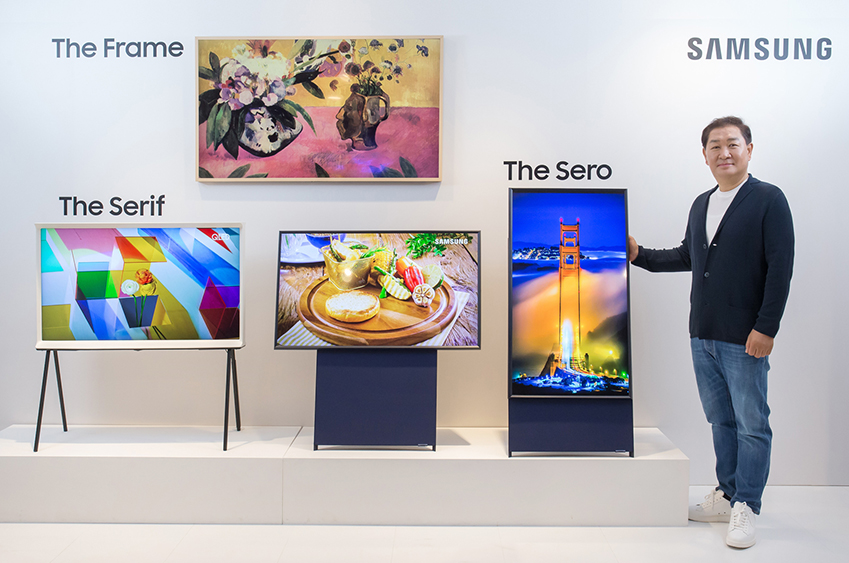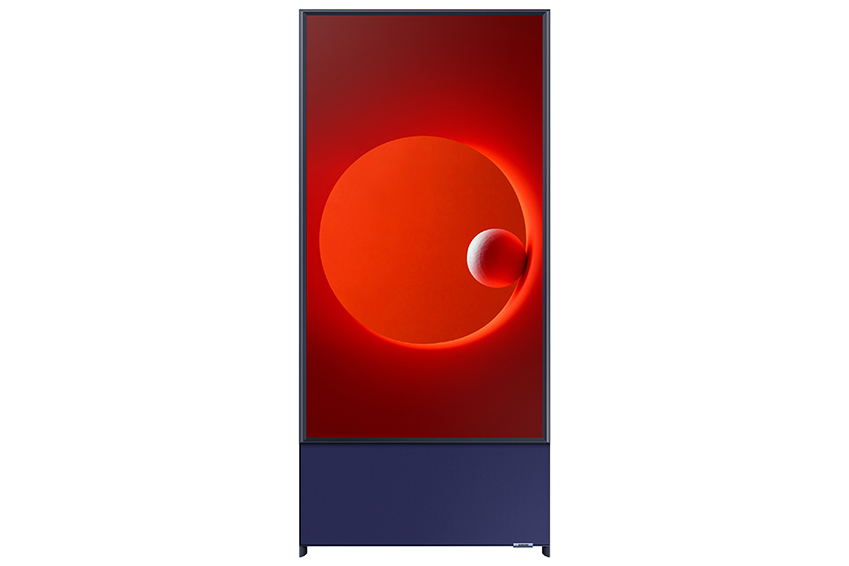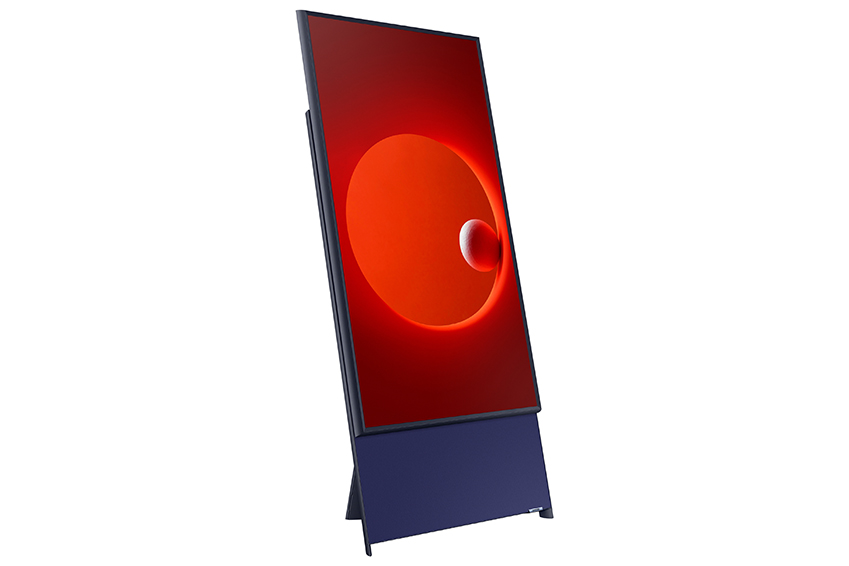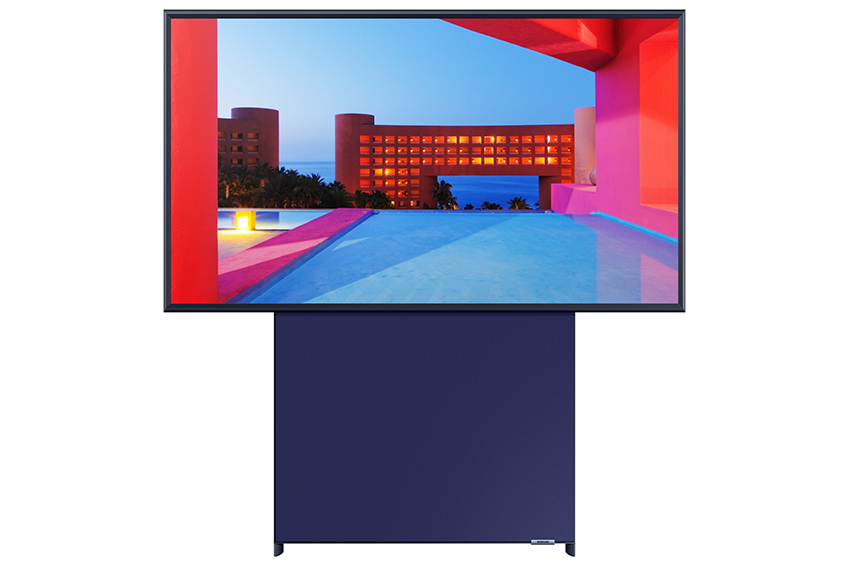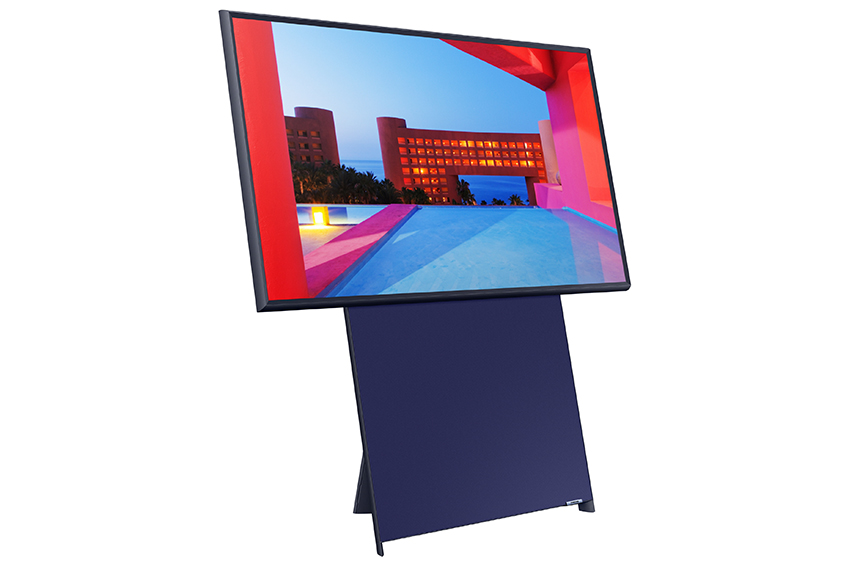Having a computer monitor that rotates so you can change up the ratio, giving yourself more vertical room than horizontal, makes sense for some tasks. But can the same thing be said of TVs? Samsung is betting that for millennial consumers especially, the answer is yes. The company’s new The Sero lifestyle TV is designed to be primarily viewed in a vertical orientation but can rotate to provide a traditional TV experience.
“Samsung Electronics analyzed the characteristics of the Millennial generation,” says a translated company press release, “which is familiar with mobile content, and presented a new concept TV [named] ‘The Vertical’, which is based on the vertical screen, unlike the conventional TV.” The TV uses an easel-style stand that looks like it would prevent both table-top and wall mounting, though the full specs have yet to be released. The color of both the stand and the TV — a muted blue — may also be limiting if it’s the only color available.
Those who find the concept attractive will have to pay a premium over similarly sized, conventional TVs: The Sero, or “The Vertical” has a relatively small 43-inch screen, and will be going on sale in South Korea at the end of May for 1.89 million won (about $1,600).
Samsung isn’t marketing The Sero under the belief that broadcast TV content will one day move from its traditional horizontal layout to a vertical one. Instead, The Sero is intended to provide a larger screen for mirroring mobile content, without creating the awkward, skinny image and massive, black sidebars you typically see when mirroring from a smartphone. Samsung cites mobile video, games, and shopping as three of the activities it thinks people will most likely choose to share with friends via The Sero’s big, vertical screen.
Beyond its unique rotating display, The Sero has 60 watts of built-in 4.1 sound, which Samsung says is perfect for enjoying online music services, or casting music from your phone. When not in use, the screen can double as an art display, a feature it shares with its lifestyle stable-mates, The Serif, and The Frame. Also built-in is Samsung’s Bixby A.I. voice assistant.
There is no word yet on when or if The Sero will make its way stateside. Perhaps Samsung will wait to see how South Korean millennials respond to its unusual design before trying to find it an audience in other markets.
Updated April 30, 2019: An original translation of the Korean language press release had the incorrect price of the device. The actual price is 1,890,000 won.
